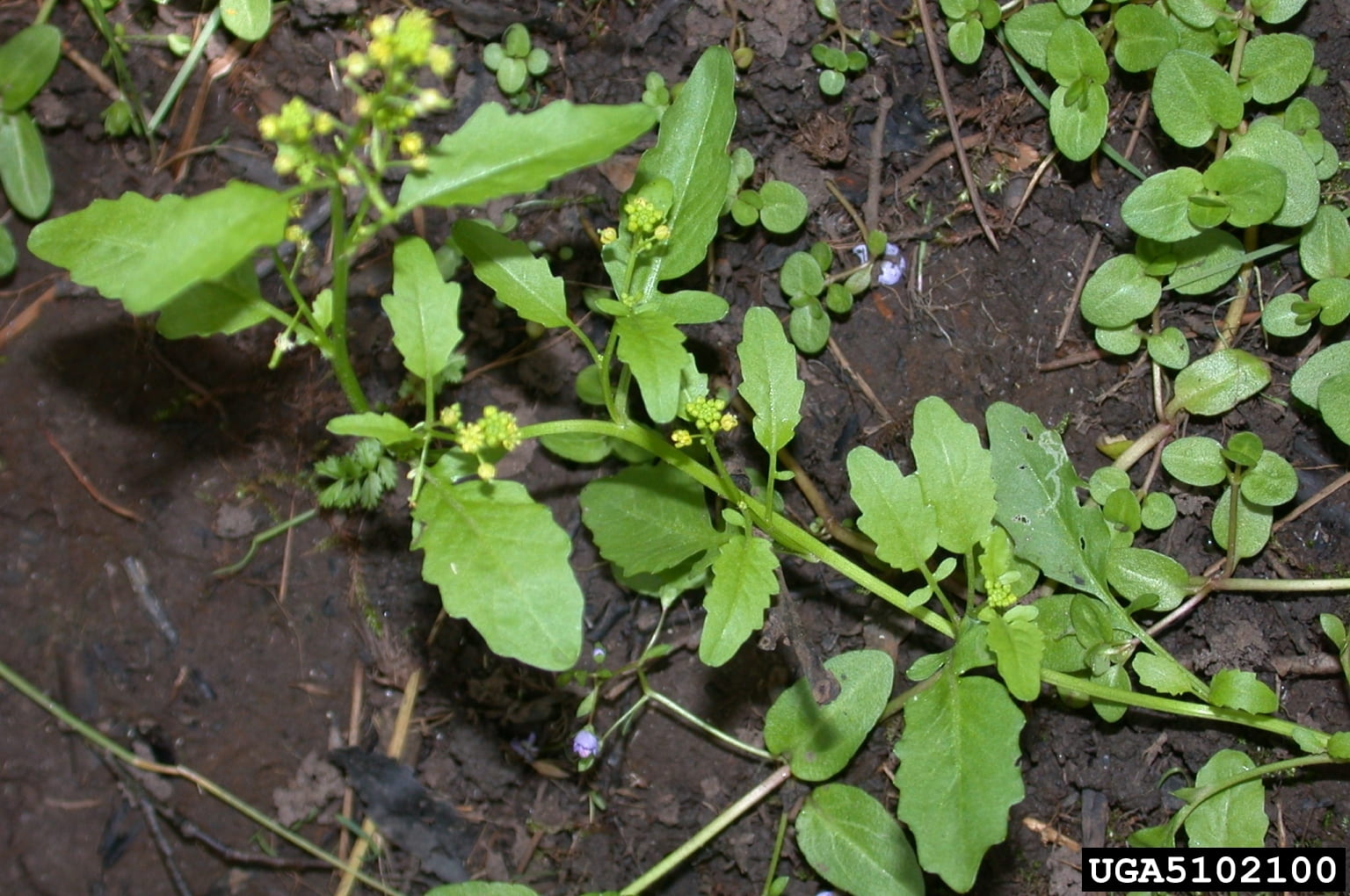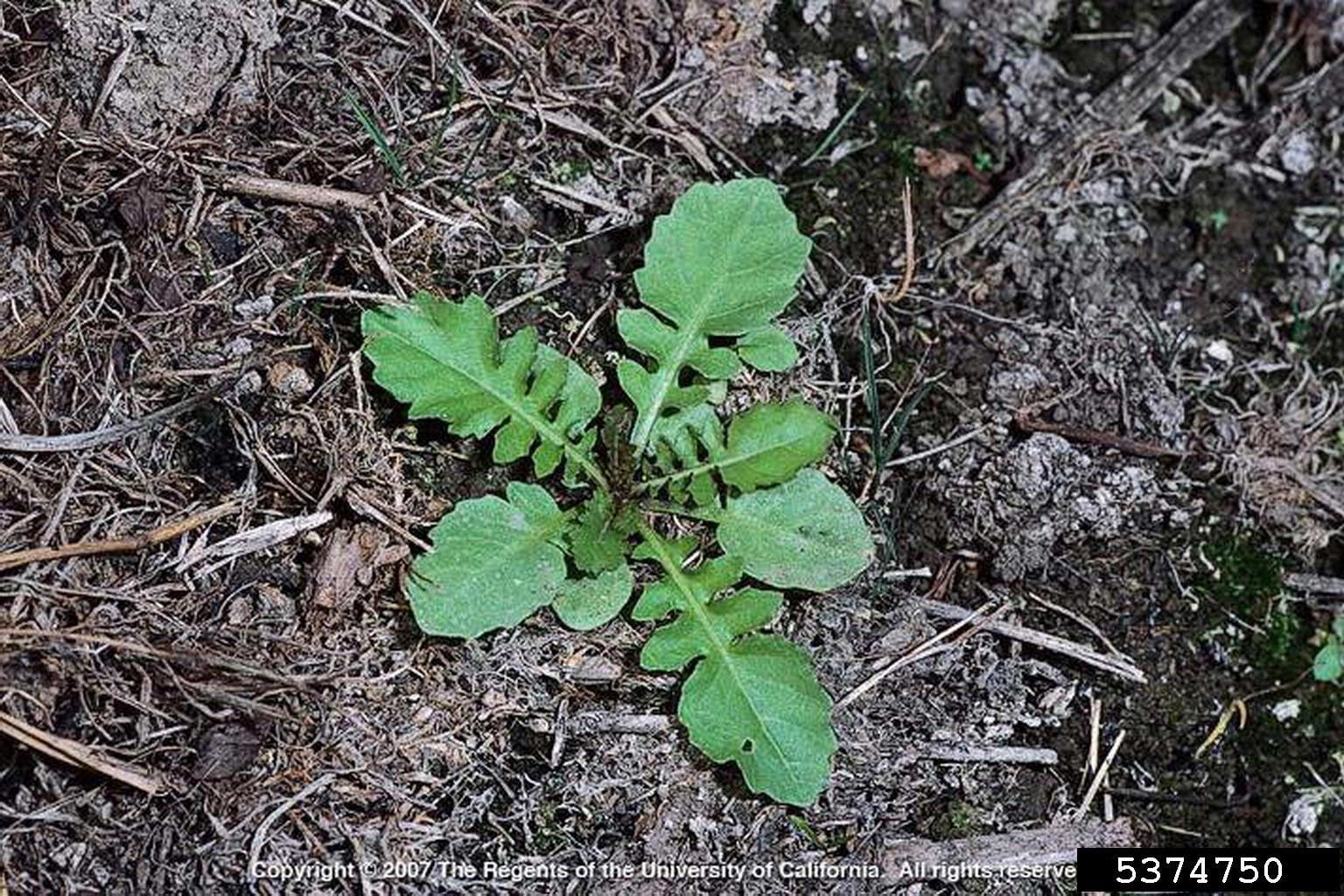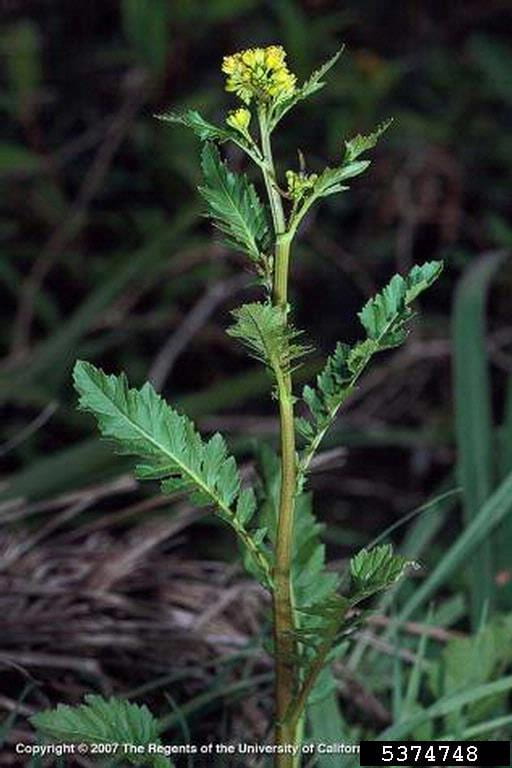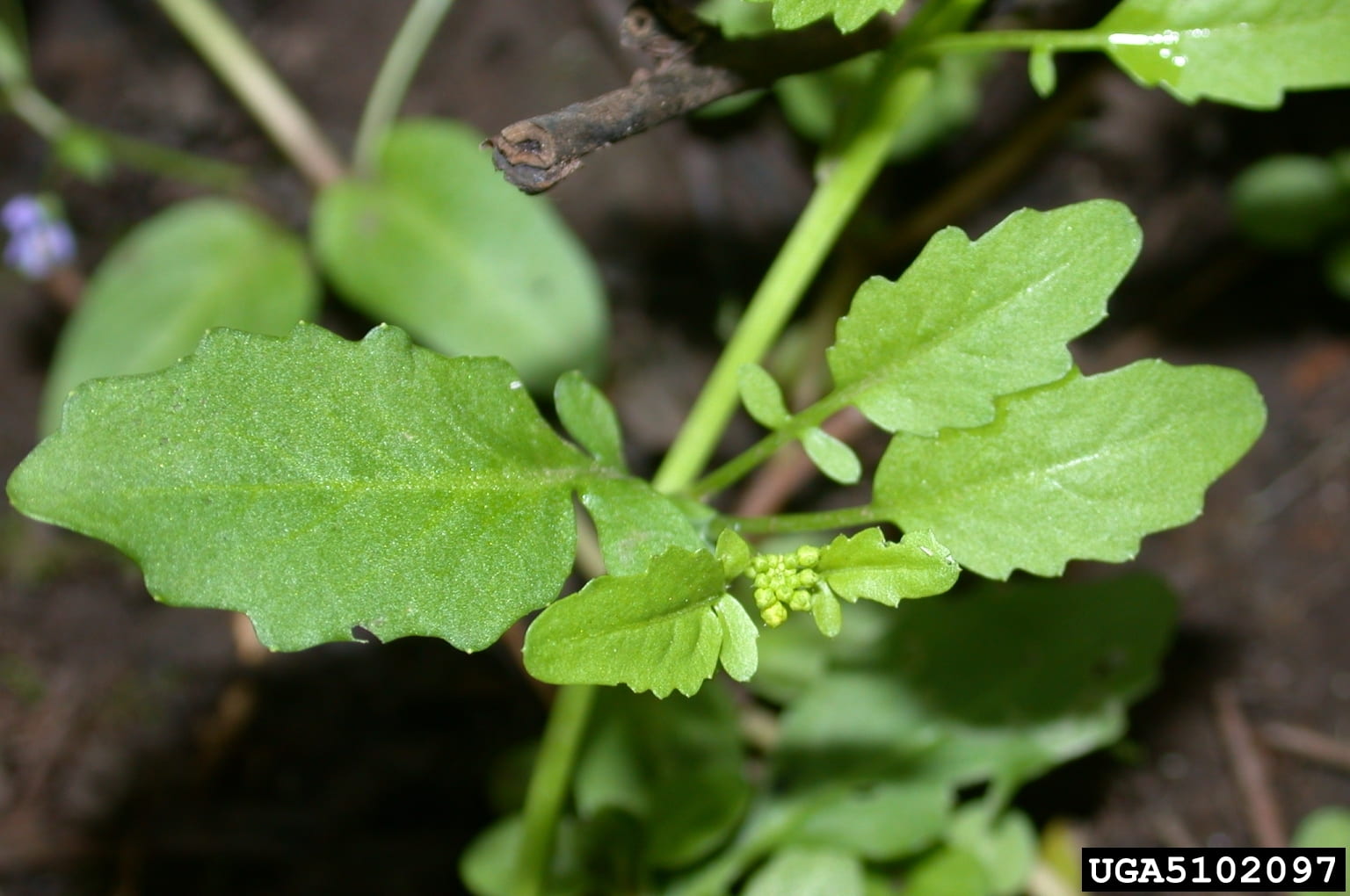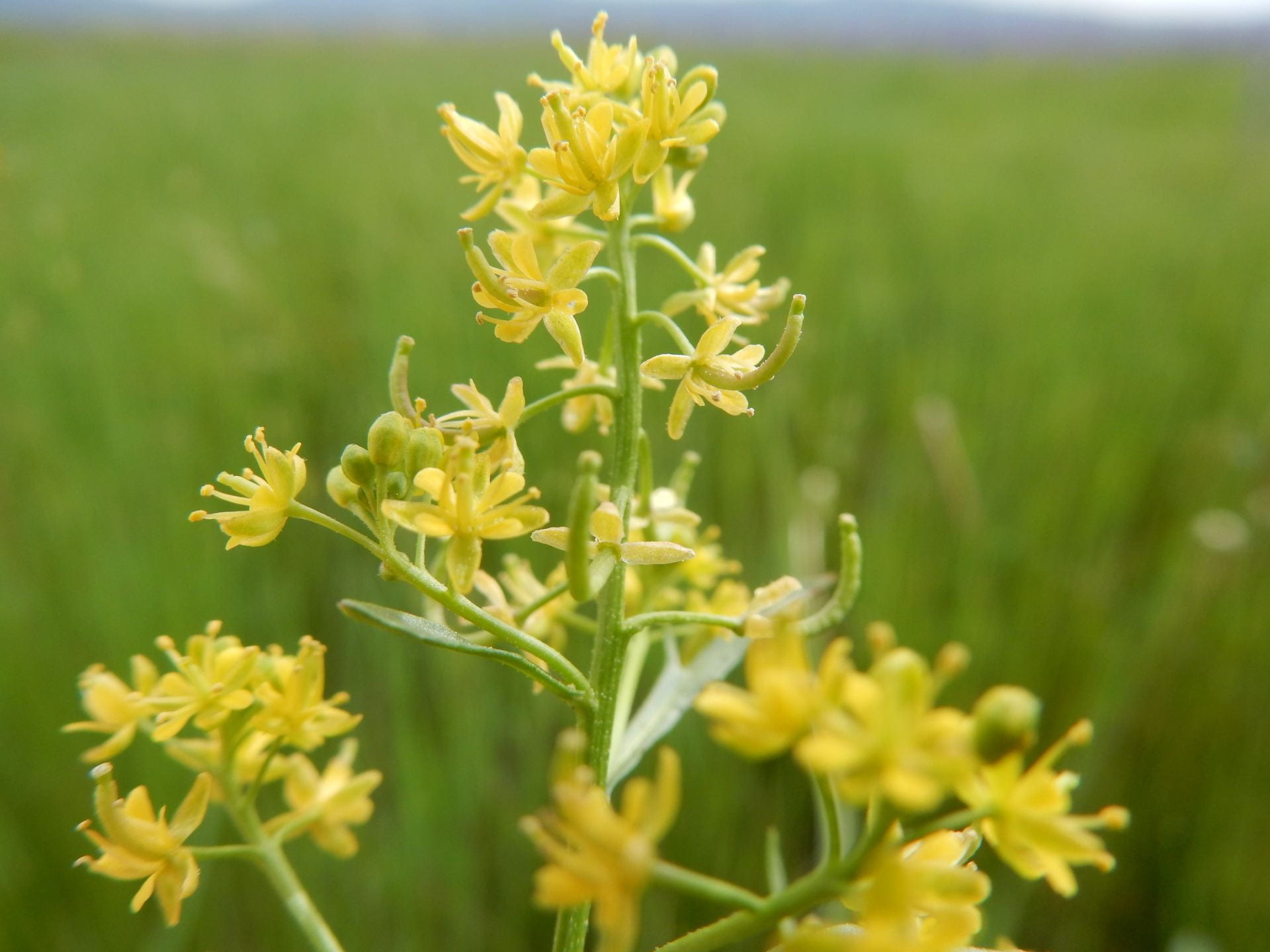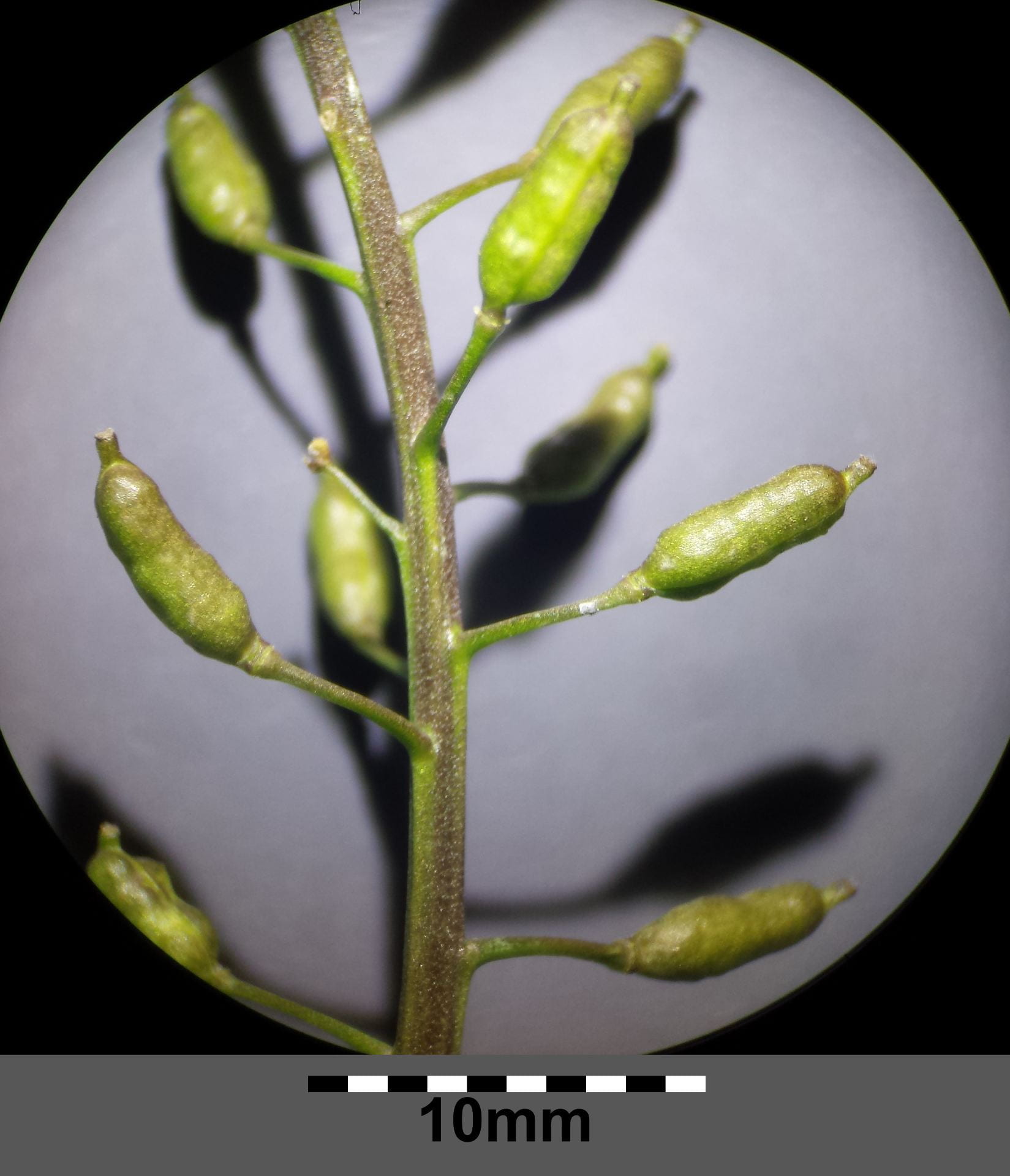Marsh Yellowcress (Rorippa palustris) is an annual, biennial, or rarely a short-lived perennial. This weed is an issue in vegetable, small fruit, and nursery crops. It can grow in a wide range of conditions, but thrives in wet and nutrient-rich soil and in poorly drained areas.
Marsh yellowcress is one of 3000+ species in the mustard family. For help identifying weedy mustards either in the rosette or flowering phase, please visit our mustard identification page.
Identification
Seedlings: Marsh yellowcress cotyledons are 1-2 cm (<1″) long, elliptic to round, and formed on cotyledon stalks (petioles). The first few leaves to emerge are egg-shaped to elliptic/heart-shaped with wavy margins and petioles. Later leaves are deeply, regularly lobed (see photo to right).
Leaves: Leaves of the mature plant are alternate and have petioles. At the base of the plant, each leaf has 3-7 pairs of irregularly toothed lobes and a larger terminal lobe. Those on the upper portion of the plant vary from this lobed shape to deeply toothed to entire margins. Sometimes, leaves on the plant’s stem have ear-like projections at the base of the leaf.
Mature plant: The stems can be branched or unbranched. They are angular, hairless or somewhat hairy below. Flowers emerge in June and are present through September.
Flowers/Fruit:
Flowers develop on unbranched racemes either on the terminal part of stems or in the upper leaf axils. The yellow flowers are 2-3 mm (~1/10”) in diameter and 1-2.5 mm (~1/10”) long. Flowers consist of 4 petals and 6 stamens. The fruit forms as silique is 4-14 mm (1/5”-3/5”) long by 1-3 (~1/10”) mm wide and cylindrical to spherical. It is slightly curved up and has 2 valves which each contain many seeds.
Management
Chemical control
New York specific guidance can be found in the Cornell Crop and Pest Management Guides. Marsh yellowcress is a typical winter annual and can be managed with normal chemical management tactics for such weeds.
Non-chemical control
Marsh Yellowcress is an annual with a shallow root system, and does not reproduce vegetatively; it is not a difficult weed to manage and should be well controlled by a typical weed control protocol.
For general non-chemical management of mustards, please visit the mustards identification page.
References
Uva R H, Neal J C, DiTomaso J M. 1997. Weeds of the Northeast. Book published by Cornell University, Ithaca NY. The go-to for weed ID in the Northeast; look for a new edition sometime in 2019.
Cornell University’s Turfgrass and Landscape Weed ID app. Identification and control options for weeds common to turf, agriculture, and gardens in New York; uses a very simple decision tree to identify your weed.
Organic management suggestions are from Dr. Charles Mohler of Cornell University. Look for an upcoming book from Dr. Mohler on ecological management of weeds, from Cornell University Press.
PennState Extension’s webpage on Control of Summer Annual Grass Weeds in Turfgrasses. Offers descriptions of cultural and chemical control methods.

